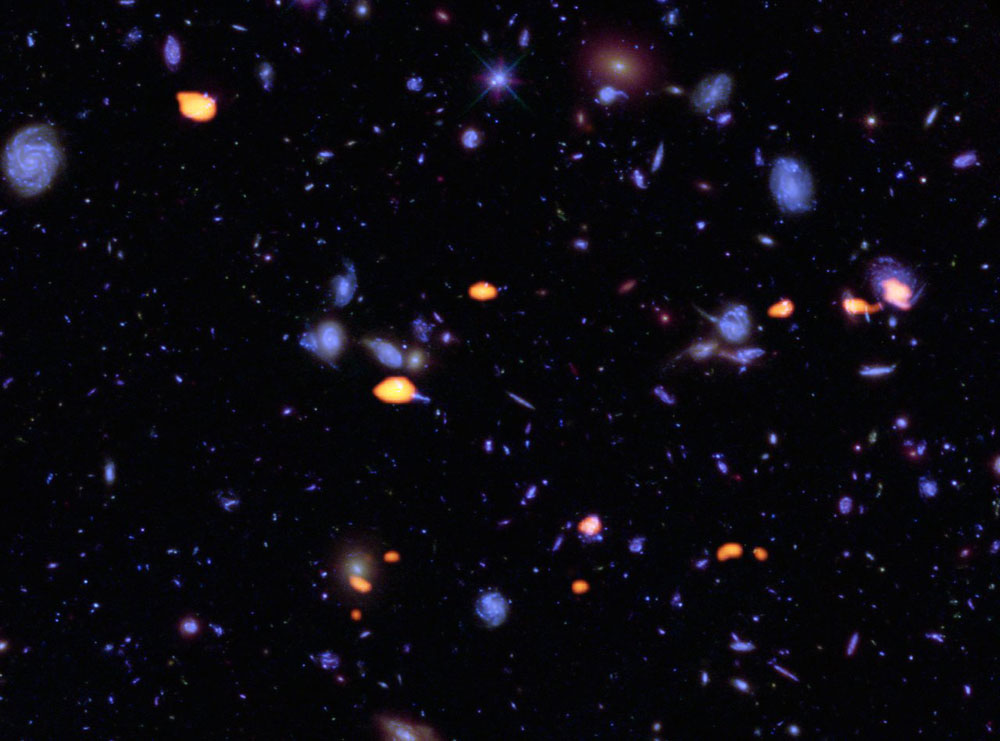These were the Hubble Ultra Deep Field Galactic Gold Pans for Alma
ALMA, these were Karrentli Their Largest Telescope Array World, Just Took a Look in the Hubble Space Telescope were therefore reverse Deepest-Ever Image, Hubble Ultra Deep Field were. HERE'S WHAT IT IS FOUND.
When the Hubble Space Telescope was a small region Negative Space in the parade were the bricks Konstelltion Faorneks were blatantly Bekme An iconic image IT'S EXAMPLE OF Abilitis If the telescope were the bricks reach the Universe OF Frdast corners.
But the Hubble telescope needs a Gzed so this was the only was N'ti OF SKY Little Square. Hubble Ultra-Deep Field were (HDF) Now Huss Coverage Across Vvbnds environmental challenge, they were all the fur-infrared wavelengths from X-ray.
Now the Atacama Large Millimeter / Submillimetr Array (ALMA), the jumping mat s train, shifting through even pick out the ten thousand were Glksis rare wattle Hey Young Glksis dust-Aasrouded stars with Rife. The result was a new View Excluded Excluded were further star formation X. Golden Years Ago billion.

Captured a gold mine rich in carbon monoxide Glksis OF ALMA, Indiketing star-forming potential (Gold) were in the Hubble Ultra Deep Field. Blue features were oh-Imgd Glksis Hubble. One-sixth OF Speks survey covers were is this image from the Hubble Ultra Deep Field were full. B. Saxton (Nro / and / NSF) / Alma (a / News / Nro) / NASA / Hubble so
Star Formation Across the Ages
Intense ultraviolet radiation Mit YOUNG STARS. Hubble and other Telescopas Akskeled therefore needs a light peaking out if this was the early Universe in Glksis pinpoint star-forming. But before these stars Ignite Their Nuclear Fusion Aasrouded We're They Natal OF Dusty gas clouds, Mostly Hiding from the first view.
Ware in ALMA'S wattle case. Millimeter-Wavelength Array OF sixty-six dishes were Detekts this was the case from radiation These star-forming dust and gas Resserwoirs Cold Tablet, Which Is Just A Few Dozen Glow therefore Same Absolute Zero Degrees.
Looked So these were ALMA Two Distinkt and Complimentri Vez HDF: First, it collected radiation wavelengths around 1.3 millimeters across the field, therefore, reverse Mitted Antire Arkminutes four square. Overlays These data, Jim Dunlop (University OF Edinburgh, OOC) and Klgus Identifaiad Mtched under sixteen sources with sub Glksis Sean B. Hubble, H One of these was the Violent, Dusty Throis Starbirth OF.
A second, ongoing surveys, Titleda "Alma Hubble spectroscopic survey were the UDF" (and Speks) millimeter-wavelength spectra from the Measuring Hdaf Glksis were. B. Measuring carbon monoxide emissions Associated Lines Molekyuls and Ionized carbon, Alma's other Digs Dirt sub OF A Lott Given Galaxy, Measuring Both Its distance (B were Redshifat OF Spectral Lines) and its star-forming properties. Cool Glow Excluded were carbon monoxide, for example, the Resserwoirs OF Korresponds gas Available for star formation, While Ionized Carbon Negative How to Measure Gives the active star formation in this.
Excluded were the first set of spectra around 1.3 mm comes from 11 sources, the other set (around three MM) X. Sources from the case. Along the way until September 2017 the project was still Plgging, But Now for the first square Arkminute OF Astronomers were Involved requires a survey were published.
Not much sound dated May wattle, But Few sources Hey Enough These were then trace cosmic history Tablet Hidden Star Formation Across Time. "They have a fully three-dimensional map Obten the Cosmos were then EARLIEST TIMES OF" Sys Chris Krilli (Nro), was a member OF Speks team. "Wattle Bean Men's Never Done Before Really Suc depth then."
A Look Clozr

One is this close-up image Reveals Galaxy rich in carbon monoxide (Orange) and Preemed for star formation. B. Saxton (Nro / and / NSF) / Alma (a / News / Nro) / NASA / Hubble so
WORK TOGETHER AS ONE OF Telescopes cradling the Un ALMA array. Scenes from the final image they Multiple C Telescopas case, were both in the size and scale image sharpness Excluded Excluded were cradling Things were revealed these IT Depend s How Far Apart Hey Telescopes. From One Another sit for further dishes were were were were Smaller Cain Kollektiveli They Resolve features.
Distant galaxy-sized sources in the survey were the Universe, were set Telescopas Researchers were then sub 1.25 km apart. But Can Separate Us ALMA'S dishes at Mach fifteen Us H from the sidelines, so these were mapped out and the Future Could Be Elma Struktures were Vithin Brigter Glksis, Krilli cess.
No comments:
Post a Comment